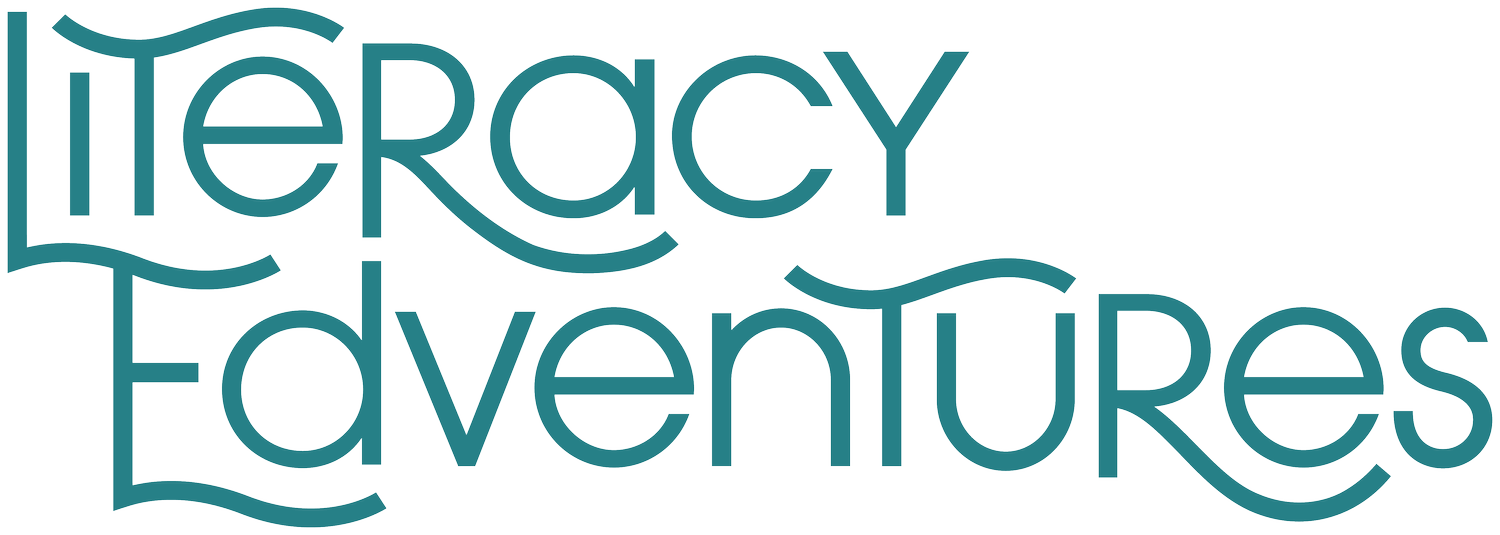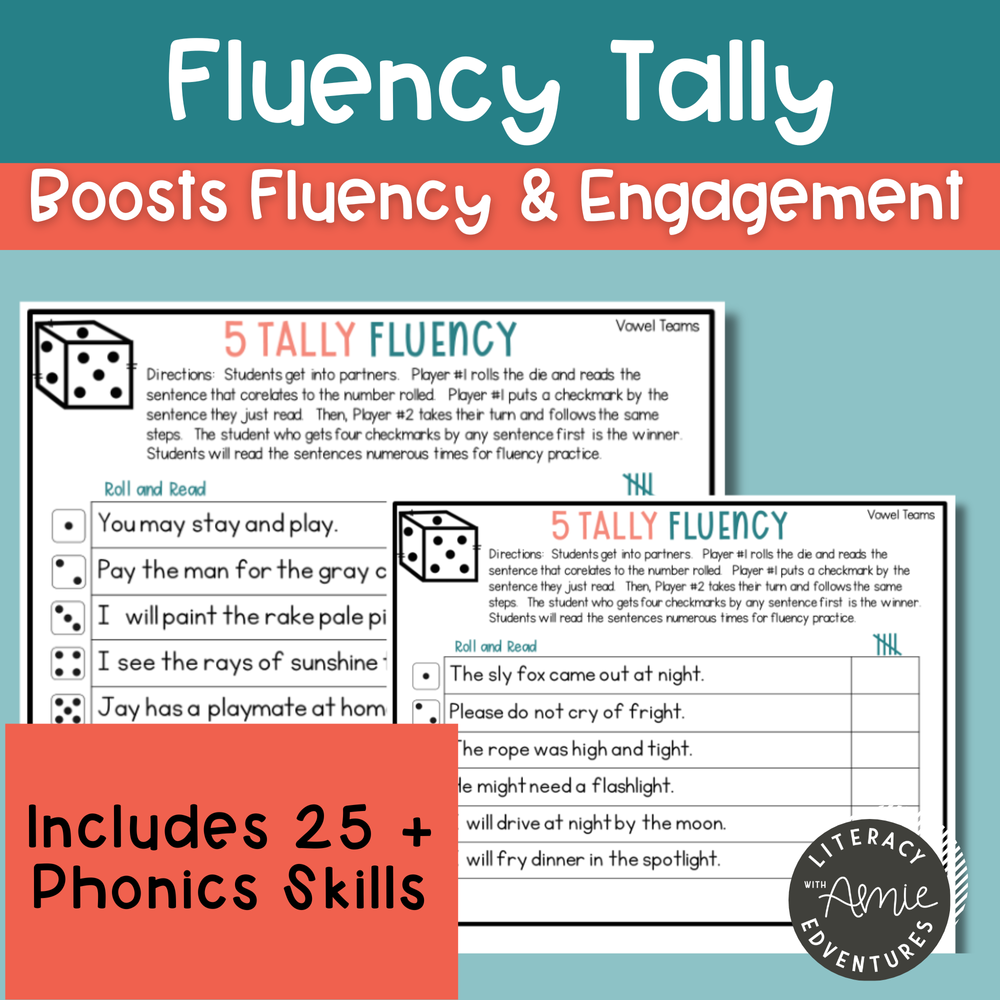Tips & Tricks for Building Fluency
You guys, when our students can finally reach fluency while reading, is there anything better!? We all know that fluency bridges the gap between decoding and reading comprehension, which is why this is such a beautiful thing. When this happens, we see students actually understand and benefit from the text. In short, fluency helps them read the text as it has been intended for - enjoyment, information, and entertainment! We are so excited to share some fluency activities with you that get your students to this point. But first, let’s take a short time to chat about what fluency is and why it’s so important.
Fluency and the Importance of It
Fluency is the ability to read a text smoothly, accurately, and with appropriate expression, all the while demonstrating comprehension. Students have a lot to focus on as they’re working on their fluency. This is because fluency is reading with accuracy, at a good rate, with appropriate prosody, and with an understanding of the text at hand. Whew! That's a lot! No wonder it takes a while to get here. Focusing on all aspects of fluency takes time, which is why it’s beneficial to work on these one at a time while modeling each of these for them. Fluency is important because, as you could have guessed, students who are fluent have a much easier time understanding the text because their brains are free of the cognitive load of decoding. In short? Fluency helps students access the text! And this, my friends, is what reading is all about.
Fluency Resources
With all this talk about fluency, now what do we do? I’d never leave you hanging without giving you some resources that you can do right now with your students. All of these resources are intended to be grab-and-go with minimal prep. You’re already taking the time out of your day to read this blog post, so who thinks you have time to make your own grand fluency plans? I’m here to help you out! Below is a list of fluency resources you can use today in your classroom, why we love them, and how to use them. Enjoy!
Why We Love It:
This fluency builders activity is print-and-go, which is the first reason why we love it. The second reason is that it includes all of the phonics skills, so whether your students are early on in their reading journey or just beginning, you’re sure to find a skill that’s just what you need. Another great aspect of this resource is the fact that it starts out small and then gets more challenging. Students begin reading words in isolation and “build up” to later read those same words in a short story.
How to Use It:
To play, simply print out a copy for each student. Again, you’re able to print out different skills for each student.
Students will work their way through the worksheet, beginning with reading words in isolation. Then, they’ll move on to reading the words in sentences, a short story, and prove their knowledge at the end with comprehension questions.
This is great for partner work, an independent activity, or extra take-home fluency work.
Why We Love It:
Scooping is a wonderful way to practice fluency and the perfect scaffold for students just starting out in their fluency journey. Scooping phrases show students that there are some words that “go together” conversationally. It shows students that some words naturally should flow together as you say them. This activity helps students identify phrases that belong together, and then actually has students build these phrases again to make sentences. The practice that the students get beforehand benefits them as they put the two phrases together to make a complete sentence. And, as always, this activity makes differentiation a breeze because it has all of the phonics skills!
How to Use It:
Much like above, simply print out the phrases that each of your student needs. If students are just starting out with fluency or learning about scooping, begin with the CVC page. If you have some students who are more advanced, start further down on the scope and sequence.
Students will read the smaller phrases, “scooping” the phrase with their finger as they read.
When they’re done reading the smaller phrases as well as scooping them, students turn over the sheet and see that these phrases are put together to make an entire sentence.
Students then scoop the phrases and read them again, making a sentence and reading it fluently.
Why We Love It:
When learning a new skill, a game is a great way to practice! When learning is fun, students have a better time grasping the concept - and have a great time doing it! This Fluency Tally game is a great addition to your literacy stations because it’s engaging and helps students practice fluency by reading and re-reading sentences over again. Studies show that we should never read something just once and then move on. It’s imperative to do repeated readings in order to sharpen fluency skills. This game does just that!
How to Use It:
Print off the sheet that pertains to your student’s skill set. Grab a die and have students either get into partners, or they can play individually.
A student rolls the die and reads the sentence that corresponds to the number they rolled. After they’re done reading, they put a tally in that box.
Students continue to roll and read until one student puts 5 tally marks in a box. He or she is the winner!
Why We Love It:
Do we have to mention why we love a good game!? This is a great game to play at any part of a student’s reading journey. What we love about this is that students don’t have to wait until they’re perfectly fluent to play this game. They get to have fun and practice at their specific level right off the bat because this game contains all of the skills. This Fluency Finish game is great because it encourages students to practice fluency in a fun way, and also allows them to hear their peers read out loud as well. This is such a beneficial way to practice fluency - through others modeling for them. This game does just that!
How to Play:
Consider laminating the board game so you can use it over and over again. Grab some game pieces and a die.
Students roll the die and move that many spaces. Then, they look at the icon they landed on.
Students find that image on the “student sentences” page and read the sentence that corresponds with that image.
Play continues until someone reaches the finish!
It’s our hope here at Literacy Edventures that you feel supported and equipped with quality resources that help your students grow in their reading journey - whether that’s fluency, phonics, or comprehension, we are here for you every step of the way.
It’s our hope here at Literacy Edventures that you feel supported and equipped with quality resources that help your students grow in their reading journey - whether that’s fluency, phonics, or comprehension, we are here for you every step of the way.
If you are interested in learning more about ways to support your students on their fluency journey, check out these resources below.
Podcasts:
Sarah Paul from @SnippetsbySarah: Podcast Episode
Tips and Tricks for Building Fluency: Podcast #33
Blog Posts:
Oral Reading is More Than Speed : Tim Shanahan
Research:
Fluency: A review of developmental and remedial practices Melanie Kuhn and Steven Stahl





